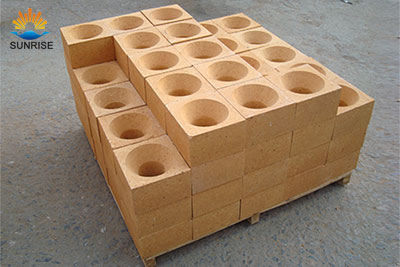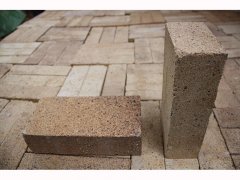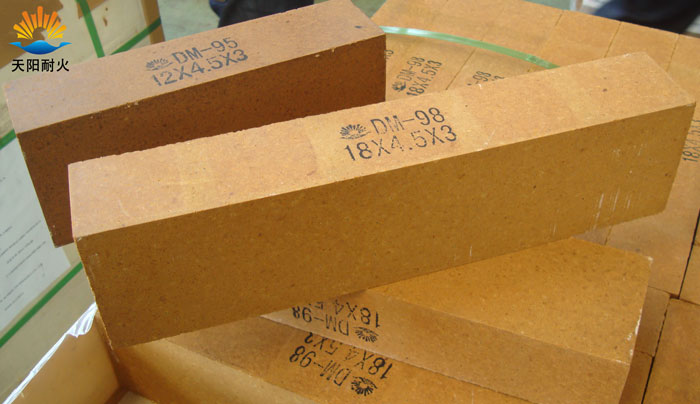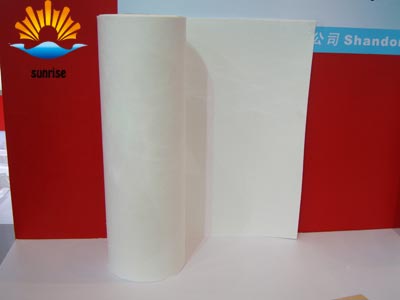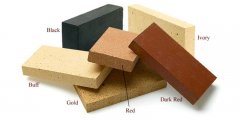1. Viscosity and temperature of glass liquid.
The higher the kiln temperature, the lower the viscosity of the molten glass. High glass kiln process temperature is required by factors (such as oxy-combustion technology, ultra-white glass, etc.). Properly increasing the glass melting temperature can increase the melting rate and reduce the viscosity of the glass liquid, which is conducive to the discharge of air bubbles. Decreasing the viscosity of the glass liquid is conducive to the improvement of glass quality, but it is not good for the corrosion resistance of the pool wall bricks, which is mainly manifested by the erosion of the gaps in the pool wall bricks, which is abnormal erosion. The viscosity is low, and the glass liquid easily enters the brick gap. The glass of the brick is accompanied by air bubbles. The upward movement of the bubbles and the mechanical movement of the backflow of the glass liquid cause more friction to the brick seam. This is the root cause of abnormal erosion of the brick seam Wherever possible, the smaller the seam, the better.
2. When the abnormal erosion of the vertical cracks on the wall of the pool is running, the glass liquid will infiltrate the cracks of the bricks beyond the standard.
In this environment, the simultaneous upward mechanical movement of the glass liquid in the brick gap with the glass phase and the bubble phase precipitated in the brick gap caused the intensified erosion of the brick gap. In addition, the flow of the glass liquid has a backflow effect in the gap. Backflow is a mechanical flow scouring process, which will make the brick joints bigger and bigger, which is one of the abnormal erosion states.
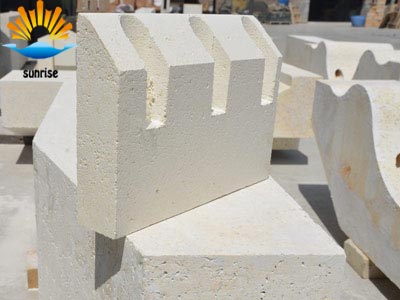
3. Very corrosive products at the liquid level of the pool wall bricks. When the glass phase content is large, the inferior product quality contains a large amount of impurities, the glass phase seriously exceeds the standard, and the sodium content will reach more than 2%. Precipitation. With the flow of the glass liquid and the liquid frictional movement of the glass phase, the glass phase precipitates in large quantities on one side and is taken away by the flow of the glass. The erosion speed at the three-phase junction is very fast. In the year, the entire 300mm part of the upper part of the pool wall was completely eroded. This is a typical phenomenon of abnormal erosion. Many other erosion factors have been reported in the literature, so I won't repeat them here.
4. Erosion phenomenon of vertical joints of kiln bricks.
When the kiln slabs are deformed by the impact of the glass liquid, the phenomenon of widening of the gaps at the joints of the bricks will occur. The widened gap provides room for the liquid glass, and the upward movement and friction of the glass with the liquid glass during the precipitation of the glass will cause abnormal erosion of the kiln bricks, showing a jagged shape.
5. Erosion factor of pool hole drilling.
(1) When there is foreign material in the product, iron is one of the harmful substances and must be strictly controlled. Iron itself contains more than 2% carbon content, which will aggravate the erosion of the product and is one of the harmful substances that affect the quality of glass products.
(2) Sand entrapment exists in the product, and it is concentrated.
(3) When the oxygen outlet of the oxygen gun is blocked and the uniform oxidation cannot be achieved, the internal carburization of the product is high. When it encounters the gap, the bubbles accompany the precipitation of the glass phase, which exacerbates the local erosion of the product.
(4) When cross-edge cracks or local cracks and large amounts of carburization of the products converge, the backwashing of the glass liquid, the glass phase content is too high, and a large number of glass phases are accompanied by bubbles, or even the leakage of the glass melt.




